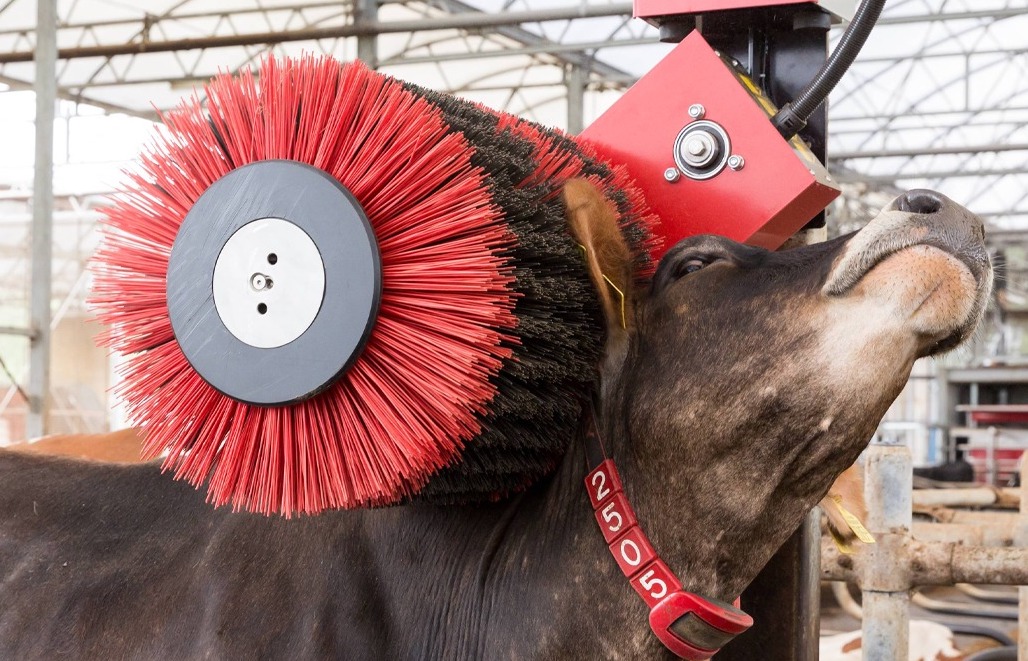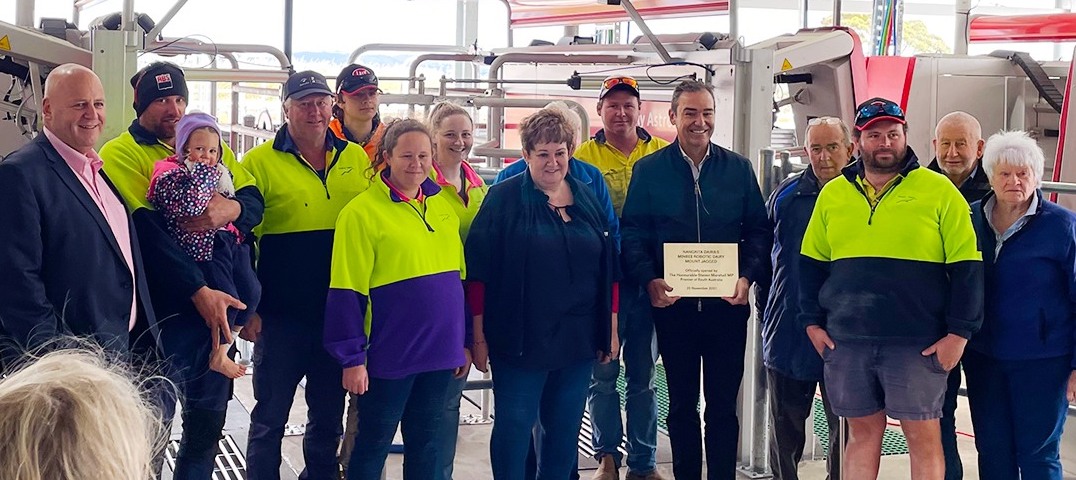Nangkita Dairies’ $2 million investment in six robotic milking machines at its Mount Jagged property in 2021 is already paying dividends in milk quality and cow health.
Owner Jake Connor is confident the technology, which has revolutionised milking operations at Minbee Mount Jagged property, will pay for itself within 10 years.
The machines work 24/7 and the cows come and go as they please, in a voluntary milking system that puts the cows in the driver’s seat.
The robots milk 360 cows up to three times over each 24 hour period. The cows walk in when they’re ready to be milked and after milking are guided to a fresh area of the property for grazing via automatic sorting gates.
As it milks, the robot collects milk quality data from each teat, covering:
- Milk quantity;
- Milk temperature;
- Milk colour; and
- Conductivity, a measure of salt in the milk, which is a marker for mastitis.
“Once the cow has finished milking, the total from the four quarters (teats) goes into a bowl and we receive data about the total fat percentage, protein percentage and cell count,” Jake said.
“There are set parameters in the system and if the milk doesn’t meet those measures, it’s dumped down the drain.”
The system also dumps any milk from antibiotic treated cows.
Milk that meets the quality parameters goes through a set of filter socks, then into a pre-cooler and finally into the vat.
Following each milking, the robot flushes the milk cups, ready for the next cow.
“If it was an antibiotic treated cow, the machine flushes the cups, the bowl, the milk lines – everything, to ensure there are no residues present,” Jake said.
Jake said the robotic technology was a powerful tool in relation to milk quality and food safety. “It enables us to measure milk quality quickly and efficiently at a per cow level every day,” he said.
“The fact that we’re getting fat, protein and cell count readings at every milking means that we’re effectively doing a herd test at every milking, which is powerful.”
The system even measures ‘suspected’ mastitis in the herd and generates a report several times a day, with mastitis risk rated out of 100 for each cow.
“We go through the list once or twice a day and if we see something that concerns us, we investigate,” Jake said.
The tech is also good for cows. As cows exit the dairy, they can walk past large massage brushes for a post-milking rub.
“The cows love them,” Jake said. “They have a good scratch on the brushes for a couple of minutes and then go on their way.
“We keep an eye on the herd to make sure cows don’t come back too often, but the system only allows each cow to be milked a maximum of three times each 24-hour period, so sometimes the cows just wander through for a massage.
“There are groups of cows that come through six or seven times a day!”
The robots also detect if a cow hasn’t been milked for more than 12 hours and alerts Jake so that he can investigate.
Another benefit for cows is the teat-by-teat approach to milking. “Because the robots monitor milk flow from each teat, they stop when the milk has run out at each teat. That’s important for cow health, as over milking can cause damage to teats,” Jake said.
“We know this system is so much better for the cows. We can see big benefits for cow health, including reduced illness, which means reduced antibiotic use for us.
“Then there are the labour savings from the robots. Overall, I think the system will offer a 10 percent increase in production efficiently.”
The robotic dairy was supplied by Lely and is serviced by O’Brien Electrical in Goolwa.
Nangkita Dairies milk goes to La Casa del Formaggio in Glynde and Jake said La Casa was excited about Nangkita Dairies robotic investment.
“They are excited to see the industry backing itself in with technology like this. And we know it will lead to improved milk quality which is a win for farmers, processors and consumers,” Jake said.
The benefits to farmers’ lifestyles from robotic technology are also significant.
“It’s added a huge amount of flexibility to our lives,” Jake said. “The voluntary milking system dramatically reduces the human labour required, which means I can focus on management of the farm, our cows, our product, and keeping our business healthy.”



